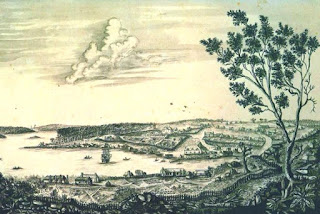Walkabout: Songlines
This article from the Australian Broadcasting Commission, reinforces and draws on a lot of the ideas I've previously heard. Ideas that have been confirmed by the elders I've been speaking to, but it also doesn't quite go far enough.
As Australia's first city, the pathways of Indigenous people were certainly used as the basic method to get from place to place, and those paths eventually became the accepted methods used by settlers, then paved for use by carriages and cars.
But in addition to the Sydney basin, this occured across the whole country. Explorers typically followed the paths linking different communities of Indigenous nations, often aided by native guides. When later leading surveyors across the land, the explorers took the paths they knew, and the Aboriginal pathways became locked into the settlers maps as the roads between towns.
Often the Aboriginal settlements were located on strategic waterholes, places where paths crossed rivers, or trading paths crossed each other, so naturally these became the places where settlers established their own towns to take advantage of the same strategic geographic elements. The Aboriginal communities were driven off, or killed, or otherwise had their connection to the land removed. Their marked trees were torn up, so that evidence of their sacred sites could be denied, but the placement of the old camps and settlements lies embedded in the current maps of the continent.
This basically means that in Walkabout, the Nomads roaming the highways uphold the sacred journeys of the Indigenous wanderers. They don't do it deliberately, but the travels along tarred motorways follow the same tracks that have been trodden for dozens of millennia (at least). The communities they meet are settled on places where the spirits have watched and influenced humanity since before recorded history, some home to those who have tried to reclaim the old ways of industrialization, some home to those who have tried to claim even older tribal ways.
Descendants of the Australian Aboriginals can be found in all these groups.


.png)

Comments